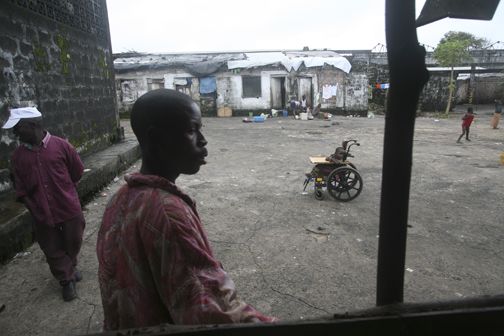The story of Charles and Mabel is one of love and loss during Liberia's civil war.
They met when they were both fighting for the same rebel group — he, for the men's unit; she, for the women's. Both were commanders of their respective groups and both fought and killed for their leader Charles Taylor. It was here, in the midst of battle, that Charles took a liking to Mabel. To hear Mabel tell it, Charles told her he loved her and the next thing she knew they were having babies. But that was ten years ago, before they moved to the GSA compound in Sinkor, Monrovia and took in the girls who fought under Mabel's command.
After the war, Charles and Mabel found themselves in the street with nowhere to go and no family left to take them in. That is when they came across the abandoned GSA compound, the site of one of Charles Taylor's former office buildings.
As they cleaned the place up others joined them until the compound became home. Today, Mabel and Charles share their tiny aluminum and wood shack with three of Mabel's former fighters and Mabel's children. Twenty of her other fighters live elsewhere in the compound. Mabel and Charles and the rest of their community fend for each other — pooling money together when someone gets sick, hustling for food, and watching each others' children.
When I ask Mabel what she needs (as if one item will solve all her problems), she tells me she needs 2,500 Liberian dollars to help one of her former fighters who is in the hospital. She doesn't mention the fact that she or her children are hungry. Or that the roof of her house is leaking because she doesn't have any tarp. And she doesn't use the fact that her youngest child is in a wheelchair with a disability to try to get money or sympathy from me. Instead, she asks me for money for her friend. When I ask why, her answer is simple: the girls depend on her and she is still their commander, war or no war.
To me Mabel and Charles represent another side of the war in Liberia. While reintegration into the community is the ultimate goal of the reconciliation effort, some communities choose either consciously or through circumstance to remain on the margins of society. The goal of disarmament and demobilization has been to separate commanders from former fighters. But Mabel and Charles and their community show that sometimes these relationships are the last remaining threads in the lives of this marginalized group. In a society which is vulnerable and unable to provide for all its citizens, these relationships are the building blocks to reintegration.
